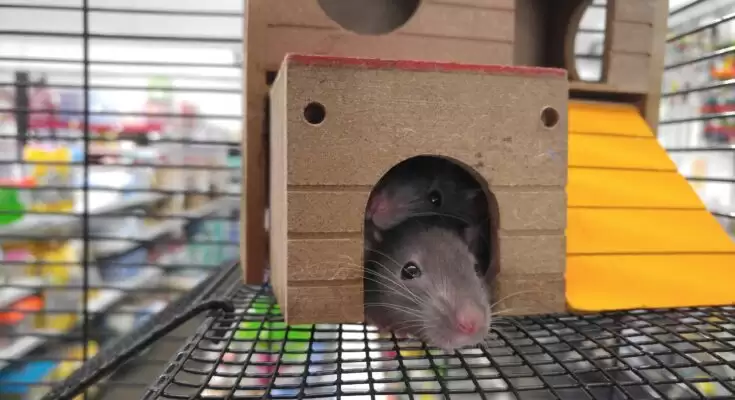The upkeep of a clean and healthy living environment must include pest management. No one wants to deal with unwanted pests invading their homes or gardens. Thankfully, there are a few measures you may do to lessen the likelihood of a pest infestation. In this ultimate guide to pest prevention, we will explore various tips and tricks to help you keep pests at bay and maintain a pest-free zone.
1. Identify Common Pests
Knowing the typical pests in your area will help you effectively prevent pests. Rodents, ants, cockroaches, termites, mosquitoes, bed bugs, and flies are a few of the most prevalent pests. Understanding the characteristics and habits of these pests will aid in implementing suitable preventive measures.
2. Keep Your Living Space Clean
Maintaining cleanliness is essential in pest prevention. Regularly clean your living space, paying attention to areas prone to pests such as kitchens, bathrooms, and storage areas. Keep floors, countertops, and sinks free of crumbs and spills. Store food in airtight containers and dispose of garbage properly. By denying pests access to food and water sources, you reduce the likelihood of an infestation.
3. Seal Entry Points
Pests can find their way into your home through small openings and cracks. Inspect your doors, windows, and walls for any gaps or crevices that pests could use as entry points. Seal these openings with caulk or weatherstripping to prevent pests from entering. Installing door sweeps and repairing damaged screens will further fortify your home against pests.
4. Properly Store Firewood
If you have a fireplace or use firewood for other purposes, it’s important to store it correctly. Keep firewood at least 20 feet away from your home and elevate it from the ground. This prevents pests, such as termites and ants, from nesting in the woodpile and potentially infesting your home.
5. Maintain Your Garden
A well-maintained garden not only enhances the aesthetics of your property but also helps prevent pests. Trim bushes and trees away from your house to eliminate potential bridges for pests to enter. Remove any standing water in your yard, as it attracts mosquitoes. Regularly inspect your plants for signs of pests or diseases and take appropriate measures to prevent their spread.
6. Fix Plumbing Leaks
Pests are attracted to sources of water. Fix any leaks in your plumbing to eliminate excess moisture, which can attract pests like cockroaches and silverfish. Additionally, ensure proper drainage around your home’s foundation to prevent water accumulation and deter pests from seeking shelter.
7. Maintain Proper Waste Management
Effective waste management plays a vital role in pest prevention. Dispose of garbage regularly in sealed bins. Clean your garbage cans and recycling bins frequently to remove any food residue or odors that might attract pests. Avoid leaving pet food outside overnight, as it can attract rodents and other pests.
8. Regular Inspections
Regularly inspect your home, both indoors and outdoors, for signs of pest activity. Look for droppings, gnaw marks, nests, or damaged plants. Early detection allows you to take immediate action to prevent a small problem from turning into a full-blown infestation.
9. Seek Professional Help
In case of a severe infestation or if preventive measures fail, it’s advisable to seek professional pest control services. Pest control experts have the knowledge, experience, and tools to tackle even the most stubborn pest problems effectively.
10. Implement Natural Pest Control Methods
In addition to preventive measures, you can also use natural pest control methods to keep pests in check. These methods are environmentally friendly and safe for both humans and pets. For example, you can use diatomaceous earth to control crawling insects like ants and cockroaches. Essential oils such as peppermint, lavender, and neem oil have repellent properties and can deter pests. Additionally, introducing beneficial insects like ladybugs and praying mantises to your garden can help control pest populations naturally.
11. Maintain Proper Ventilation
Proper ventilation in your home is essential for pest prevention. Good airflow reduces moisture levels, which can attract pests like mold and silverfish. Ensure that attics, basements, and crawl spaces are adequately ventilated. Install screens on windows and doors to allow fresh air in while keeping pests out.
12. Regularly Clean and Maintain Gutters
Clogged gutters can create a perfect breeding ground for pests like mosquitoes. Ensure that your gutters are clean and free of debris, allowing rainwater to flow freely. Regularly inspect and repair any leaks or damage to prevent water accumulation.
13. Practice Integrated Pest Management
Integrated Pest Management (IPM) is a comprehensive approach that combines preventive measures, monitoring, and targeted treatments to control pests effectively. It involves identifying the specific pest problem, evaluating the extent of the infestation, and selecting the most appropriate control methods. IPM emphasizes minimizing the use of pesticides and focuses on long-term pest prevention strategies.
14. Educate Yourself
Staying informed about pests and their behavior is crucial in pest prevention. Research local resources, attend workshops, or consult with pest control professionals to gain knowledge about pests prevalent in your area. By understanding their habits, life cycles, and vulnerabilities, you can devise effective prevention strategies.
15. Maintain a Pest Control Schedule
Consistency is key in pest control. Create a regular schedule for inspections, cleaning, and preventive measures. Set reminders for tasks such as sealing entry points, checking traps, or applying natural pest repellents. By following a routine, you establish good habits and reduce the chances of overlooking crucial pest prevention steps.
16. Pest-Resistant Materials
When renovating or constructing your home, consider using pest-resistant materials. For example, opt for treated lumber to deter termite infestations. Use wire mesh or screens with small openings to cover vents, windows, and openings in your home’s exterior. These materials can act as an additional barrier against pests.
17. Maintain a Neat and Clutter-Free Environment
Pests thrive in cluttered and untidy spaces. Keep your home organized and free of unnecessary items. Regularly declutter and remove items that may serve as hiding spots for pests. Pay attention to storage areas such as basements, attics, and closets. By reducing clutter, you eliminate potential hiding places for pests and make it easier to spot any signs of infestation.
Conclusion
Effective pest control begins with preventive measures and a proactive approach. By implementing a combination of these tips and tricks, you can significantly reduce the risk of pests infesting your home or garden. Remember to prioritize cleanliness, seal entry points, and implement natural pest control methods. By staying vigilant and taking necessary actions, you can maintain a pest-free environment and enjoy a comfortable and healthy living space.








